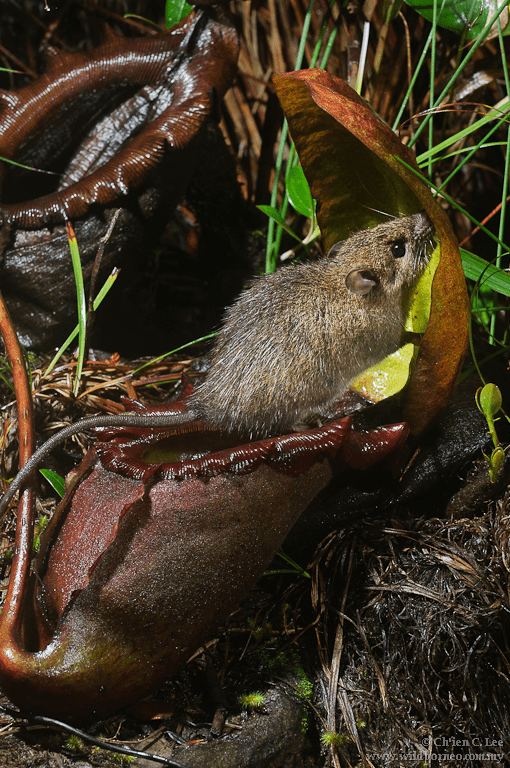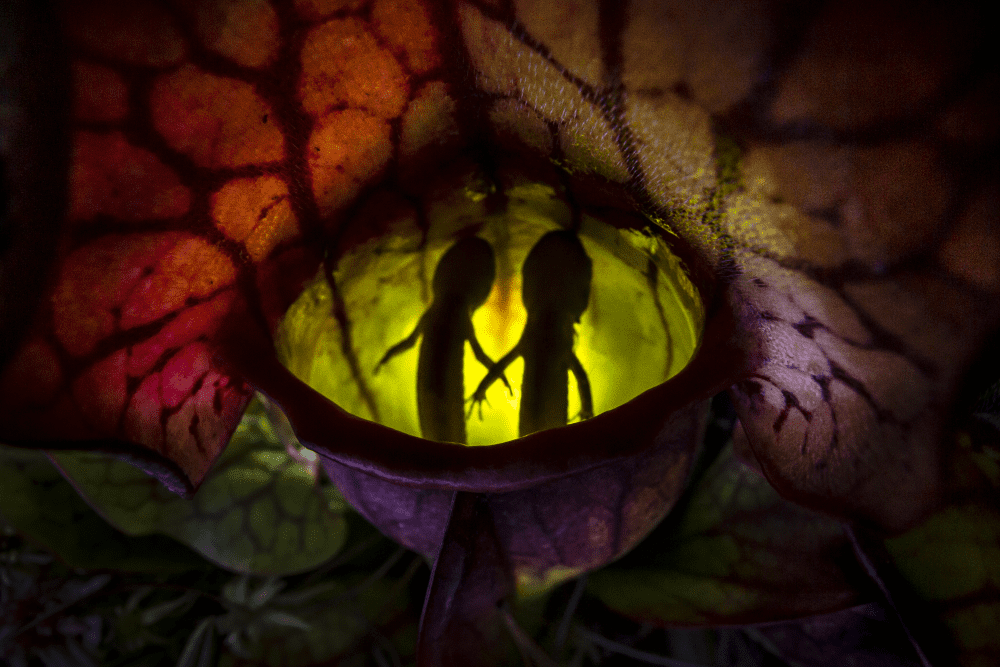Evolution has sometimes dealt species a bit of a bum deal, and if the pitcher plant Nepenthes rajah could think you’d imagine it might feel this way having adapted to effectively be a porta-potty for small mammals.
These plants are even shaped a bit like toilets, made up of a liquid-filled pitcher with an accompanying lid that secretes a nectar to lure in mammals including summit rats and treeshrews. The visitors sit atop the botanical basin as they lick up the nectar, seemingly at no risk of falling in and being digested (as is the fate of some vertebrates visiting other pitcher plant species). Instead, they repay the plant by pooping and peeing into its bell, fertilizing the plant in a mutualistic relationship that benefits both parties.

Carnivorous plants grow in nutrient-poor soils, which means they had to get creative if they were going to stay well-nourished. Some plants, like the venus flytrap, evolved active traps to capture insect prey, which they pulverize into nutrient-rich goo, but the pitcher plants went down a more passive route.
The northern pitcher plant, which sits in the Sarracenia genus, is similar to N. rajah in shape. Typically, it digests invertebrates like moths and flies, but researchers at the Algonquin Wildlife Research Station in Canada recently discovered a surprising item on the plant’s menu: juvenile Spotted Salamanders.
Photos of the salamanders recently won Canadian photographer Samantha Stephens first place in the Close-Up Photographer Of The Year Competition for her photo of a pitcher plant with a big appetite.

Stephen’s image “Nature’s Pitfall” won her the title of Close-Up Photographer Of The Year. Image credit: Samantha Stephens, CUPOTY
“Pitchers typically contain just one salamander prey at a time, although occasionally they catch multiple salamanders simultaneously,” she said in a statement. “When I saw a pitcher that had two salamanders, both at the same stage of decay floating at the surface of the pitcher’s fluid, I knew it was a special and fleeting moment.”
What makes the nepenthes plant N. rajah so interesting is that it’s worked out a way to get nutrients in a nutrient-poor environment in a way that benefits another species instead of digesting it into a pulp. The discovery, made back in 2011, was a first for carnivorous plants.
“This study is the first to demonstrate that a mutualism exists between a carnivorous plant species and multiple members of a small mammal community,” concluded the authors of the paper. “Further, the newly discovered mutualism between R. baluensis and N. rajah represents only the second ever example of a multidirectional resource-based mutualism between a mammal and a carnivorous plant.”
Source Link: This Pitcher Plant Evolved To Be A Urinal For Rats